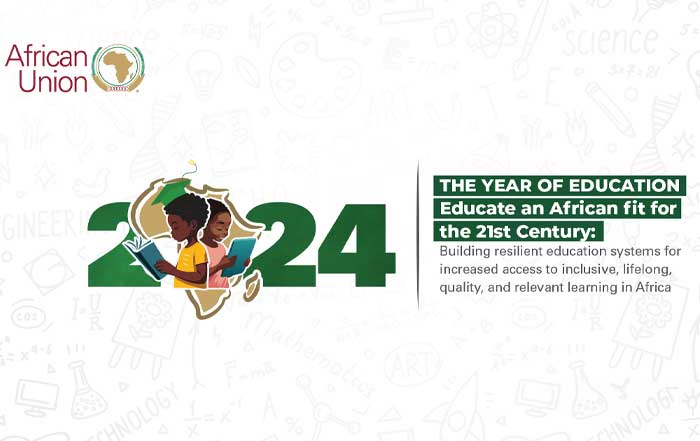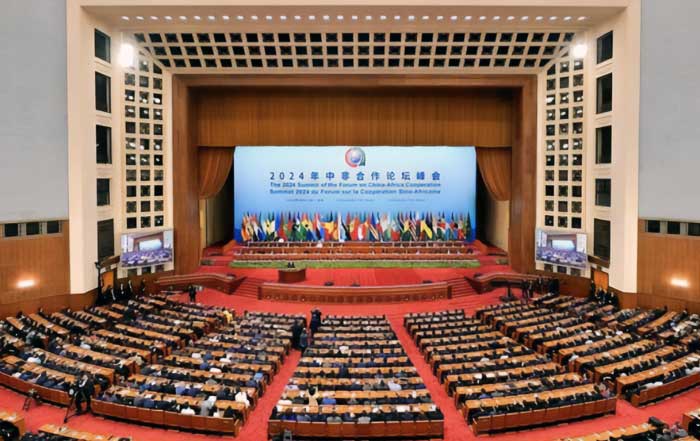Brazil stands at a pivotal economic crossroads. The country, long known for its vast natural resources and dynamic consumer market, continues to wrestle with both opportunities and challenges that shape investor sentiment. While global markets remain volatile due to fluctuating commodity prices, geopolitical uncertainty, and shifting monetary policies, Brazil’s unique position as Latin America’s largest economy gives it a significant role in shaping regional stability and growth.
The Brazilian economy, powered by sectors such as agriculture, mining, manufacturing, and services, has shown resilience in the face of international headwinds. According to data from the Brazilian Institute of Geography and Statistics (IBGE), GDP growth has stabilized at around 2.3% in 2025, driven by domestic consumption, expanding export markets, and a renewed focus on sustainable industries. However, inflationary pressures and interest rate adjustments by the Central Bank of Brazil (Banco Central do Brasil) have introduced new complexities for both domestic and foreign investors.
Learn more about Brazil’s evolving economic environment.
Global and Local Factors Driving Market Volatility
Brazil’s market volatility is influenced by both internal dynamics and global developments. On the international front, rising global interest rates, particularly from the U.S. Federal Reserve, have affected capital flows into emerging markets. Investors, seeking higher returns in developed economies, have pulled funds from riskier markets, creating fluctuations in the Brazilian real (BRL) and impacting the B3 Stock Exchange in São Paulo. The BRL/USD exchange rate has hovered near 5.3 in mid-2025, reflecting cautious investor sentiment.
Domestically, Brazil’s fiscal policy and political environment have played a major role in shaping investor confidence. Efforts by the Ministry of Finance to reduce public debt and control inflation have been met with varying degrees of success. In 2025, while inflation has moderated from its 2023 peaks, energy prices, supply chain disruptions, and agricultural dependency on climate conditions continue to generate uncertainty. Political transitions, particularly surrounding environmental regulations in the Amazon Basin, have also had ripple effects on investor perceptions and foreign direct investment (FDI).
For investors seeking clarity in uncertain times, understanding these intertwined global and local influences is essential. Read more about global market trends and investment insights.
The Role of Commodities and Exports
Commodities remain the cornerstone of Brazil’s economy, accounting for more than 50% of total exports. The nation’s agricultural sector, led by exports of soybeans, corn, sugar, and coffee, continues to dominate, while the mining sector, centered on iron ore and gold, sustains vital trade partnerships with China, the United States, and Europe. However, commodity cycles inherently contribute to volatility. When global demand weakens or prices drop, Brazil’s revenue streams and investor returns fluctuate sharply.
In 2025, the transition toward green energy and sustainable trade agreements has redefined Brazil’s export portfolio. The country’s growing investments in biofuels, solar power, and lithium extraction have attracted both local entrepreneurs and international corporations such as Vale, Petrobras, and Suzano. These companies are increasingly aligning their operations with Environmental, Social, and Governance (ESG) principles, a trend that resonates with global investors prioritizing sustainability.
Learn more about sustainable business initiatives and trends at upbizinfo.com/sustainable.html.
The Impact of Government Policy and Fiscal Reforms
Fiscal policy has always been a determining factor in Brazil’s economic volatility. In 2025, the federal government continues its fiscal consolidation efforts, aiming to reduce the public debt-to-GDP ratio that exceeded 73% during the pandemic years. The introduction of tax reforms, including simplification of corporate taxes and incentives for foreign investors, has improved Brazil’s ease of doing business. President Luiz Inácio Lula da Silva’s administration has prioritized social spending alongside efforts to attract sustainable investments, particularly in renewable energy and technology.
Meanwhile, Banco Central do Brasil has maintained a cautious stance on interest rates. The Selic rate, Brazil’s benchmark interest rate, remains around 10.25% in 2025, signaling the central bank’s commitment to inflation control. While high interest rates stabilize the currency and attract foreign capital, they also limit domestic credit availability, affecting small and medium enterprises (SMEs) and consumer spending.
For investors navigating this environment, understanding the balance between monetary tightening and fiscal stimulus is key. Read more insights about banking and finance.
Political Risk and Regulatory Challenges
Political risk remains an underlying driver of market fluctuations in Brazil. The government’s stance on environmental conservation, tax enforcement, and foreign investment can rapidly shift, influencing both investor sentiment and long-term market outlooks. Debates around the Amazon protection law, foreign ownership of farmland, and cryptocurrency regulation have added layers of complexity to investment strategies.
The introduction of new frameworks for digital assets and blockchain-based financial instruments has drawn the attention of both institutional and retail investors. Regulatory clarity in this domain is evolving, with the Comissão de Valores Mobiliários (CVM)—Brazil’s equivalent of the U.S. SEC—playing a central role in defining compliance standards. By 2025, Brazil is one of Latin America’s leading adopters of digital finance, yet questions around taxation, data protection, and cross-border transactions remain.
Explore how digital assets are transforming markets at upbizinfo.com/crypto.html.
HIGH
MEDIUM
MANAGED
Currency Risk and Inflation Management
The volatility of the Brazilian real is one of the most significant risks facing investors. Since the real is closely tied to commodity exports, sudden global price movements or domestic policy shifts can cause rapid fluctuations in value. In 2025, while the real has shown signs of stabilization, periodic depreciation against major currencies such as the U.S. dollar and euro still poses a challenge for portfolio diversification.
Inflation management remains a top priority for economic planners. While inflation has eased to around 4.5% in 2025, food and housing costs continue to rise faster than average wages. The central bank’s intervention through interest rate controls and open market operations has been effective in curbing extreme inflationary cycles. However, these measures can also dampen growth, particularly in the retail and real estate sectors.
Investors focusing on long-term growth in Brazil must carefully hedge against currency volatility through diversified portfolios and instruments such as currency swaps and inflation-indexed bonds. More strategies for managing investment risks can be explored further on upbizinfo.com.
Investment Opportunities Amid Volatility
While volatility introduces uncertainty, it also presents opportunities. Sectors such as technology, renewable energy, agriculture, and infrastructure are poised for growth. Brazil’s digital transformation has accelerated significantly, with tech startups in São Paulo and Florianópolis leading innovations in fintech, logistics, and e-commerce. Platforms such as Nubank, PagSeguro, and StoneCo have emerged as key players, expanding access to digital banking and financial inclusion across underserved populations.
Additionally, foreign investors are increasingly turning their attention to Brazil’s green energy sector. The nation’s commitment to carbon neutrality by 2050, as outlined in its climate strategy, has spurred investments in solar farms, wind energy projects, and hydrogen research. These initiatives not only align with global sustainability goals but also create new financial instruments for impact investors and ESG-focused funds.
Learn more about Brazil’s business transformation at upbizinfo.com/business.html.
Foreign Direct Investment and Global Confidence in Brazil
Foreign Direct Investment (FDI) continues to be a vital pillar of Brazil’s economic development strategy in 2025. Despite cyclical challenges and market volatility, investor confidence in the country’s long-term prospects remains strong, especially in sectors like renewable energy, digital infrastructure, logistics, and consumer technology. According to the United Nations Conference on Trade and Development (UNCTAD), Brazil ranks among the top 10 global destinations for FDI inflows, surpassing USD 80 billion in 2025, an impressive rebound after pandemic-era declines.
This resurgence has been largely driven by international partnerships and the government’s renewed focus on industrial modernization. Foreign capital has been channeled into strategic public-private partnerships (PPPs), which have accelerated the development of transportation corridors, port modernization projects, and clean energy facilities. Multinational corporations, such as Siemens Energy, General Electric, and Shell, have expanded their operations in Brazil, capitalizing on favorable tax policies and long-term infrastructure concessions.
One of the most significant transformations has been in Brazil’s digital sector. With a growing population of over 220 million and a young, tech-savvy demographic, the nation has become a testing ground for global technology companies. Google Cloud, Amazon Web Services (AWS), and Microsoft Azure have made substantial investments in Brazilian data centers to support local enterprises embracing cloud-based solutions and artificial intelligence tools. These developments have improved the country’s digital competitiveness and positioned Brazil as a technology hub for Latin America.
Learn more about how technology is driving economic transformation at upbizinfo.com/technology.html.
Portfolio Diversification Strategies for Investors
Volatility, while inevitable, can be managed effectively through strategic diversification. For investors navigating Brazil’s dynamic market, diversification across asset classes, industries, and regions has proven to be one of the most reliable methods to mitigate risk. In 2025, both local and international investors are employing hybrid investment strategies that combine traditional equities with emerging asset categories such as digital currencies, infrastructure bonds, and ESG-linked funds.
Institutional investors have particularly embraced diversification into infrastructure and sustainability projects, recognizing Brazil’s growing importance in the global transition to clean energy. Pension funds and sovereign wealth funds from Europe, the Middle East, and Asia have expanded their exposure to Brazilian bonds and private equity deals. These funds aim to capture long-term value while supporting environmental resilience and social inclusion initiatives aligned with the United Nations Sustainable Development Goals (SDGs).
Additionally, Brazil’s real estate and agribusiness sectors have seen a surge in institutional interest. Investors are focusing on farmland, logistics warehouses, and smart city developments—projects that provide steady returns despite broader market fluctuations. Real estate investment trusts (REITs) listed on B3, Brazil’s main stock exchange, have outperformed traditional equities over the last two years, signaling investor preference for tangible, inflation-resistant assets.
Investors seeking deeper insights into emerging market strategies can explore more at upbizinfo.com/investment.html.
The Rise of Digital and Crypto Investments
Brazil has rapidly evolved into one of the most crypto-friendly nations in the world. The 2024 introduction of the Digital Real (Drex) by the Central Bank marked a historic milestone in Latin America’s financial innovation. In 2025, this central bank digital currency (CBDC) continues to gain traction, enabling faster, more transparent, and lower-cost financial transactions across the nation’s economic sectors.
The regulatory clarity surrounding cryptocurrencies has encouraged fintech startups and established financial institutions alike to launch blockchain-based payment systems and investment products. Nubank, for instance, has integrated crypto wallets into its ecosystem, allowing users to trade major digital assets such as Bitcoin and Ethereum directly from their banking app. Meanwhile, XP Inc., a major investment platform, has launched tokenized real estate and bond offerings, giving investors access to fractional ownership in traditionally illiquid markets.
Institutional adoption has also accelerated. Asset managers are using blockchain to optimize portfolio management and compliance reporting, while the CVM has rolled out frameworks to regulate decentralized finance (DeFi) activities. These innovations are transforming Brazil into a leading hub for Web3 adoption in the Southern Hemisphere.
Discover more about Brazil’s evolving crypto landscape at upbizinfo.com/crypto.html.
Institutional Investors and Risk Management Approaches
Institutional investors—such as pension funds, insurance companies, and mutual funds—play a critical role in stabilizing Brazil’s financial system amid volatility. Their long-term strategies often serve as a benchmark for smaller investors. In 2025, these institutions are adopting data-driven decision-making models that leverage artificial intelligence and predictive analytics to assess market risks and identify emerging opportunities.
Banco do Brasil Asset Management and Bradesco Asset Management (BRAM) have integrated AI-based forecasting tools that analyze macroeconomic trends, commodity cycles, and global liquidity flows. By combining human expertise with algorithmic insights, institutional portfolios have become more adaptive and resilient. The use of machine learning for credit risk assessment, bond valuation, and equity portfolio optimization has also improved overall capital efficiency in the Brazilian market.
Moreover, risk management in Brazil increasingly involves ESG screening and sustainability assessments. Investors are no longer solely focused on short-term profitability but are also evaluating companies based on their carbon footprints, governance transparency, and social impact. The inclusion of ESG metrics in institutional reporting frameworks reflects a global movement toward responsible investment practices that balance profitability with long-term societal value.
Explore how ESG investing is shaping future markets at upbizinfo.com/sustainable.html.
The Role of Innovation in Reducing Market Instability
Technological innovation is emerging as one of the most effective tools for managing financial volatility in Brazil. Artificial intelligence, blockchain, and automation have enhanced transparency, reduced transaction costs, and improved regulatory compliance across sectors. The country’s fintech ecosystem—one of the most advanced in Latin America—has empowered millions of citizens with access to mobile banking, digital credit, and online investment platforms.
Fintech leaders like PicPay, Mercado Pago, and Banco Inter have revolutionized personal finance management. These digital platforms have democratized investment participation by allowing users to invest small amounts in diversified portfolios through micro-investing tools. Meanwhile, the rise of robo-advisors has enabled investors to make data-informed decisions without relying on costly intermediaries.
In the corporate sector, Brazil’s growing emphasis on digital transformation is helping businesses mitigate currency and supply chain risks. Predictive analytics tools are being used to forecast commodity prices and manage import/export strategies, reducing exposure to unpredictable global shocks. Such innovations are laying the foundation for a more stable and transparent investment ecosystem, even in the face of cyclical market disruptions.
Learn more about innovation-driven business practices at upbizinfo.com/ai.html.
Brazil’s Comparative Position Among Emerging Economies
In comparison to other emerging economies, Brazil’s financial landscape in 2025 presents both unique strengths and persistent vulnerabilities. While nations such as India, Vietnam, and Indonesia have attracted attention for their rapid manufacturing growth, Brazil continues to distinguish itself through its resource wealth, renewable energy capacity, and leadership in agricultural exports.
Brazil’s role in the BRICS+ alliance, alongside China, India, Russia, South Africa, and new members like Saudi Arabia and Argentina, has enhanced its geopolitical leverage. The expansion of trade agreements within this bloc has opened alternative financing channels, reducing dependency on Western capital markets. Additionally, cross-border currency settlement mechanisms in local currencies have insulated Brazil from some of the volatility associated with dollar-denominated debt.
However, structural challenges persist. Bureaucratic hurdles, complex tax structures, and inconsistent regulatory enforcement remain key concerns for international investors. While reforms are ongoing, full institutional modernization is still a work in progress. Nevertheless, Brazil’s commitment to renewable energy, agricultural innovation, and digital inclusion positions it as a vital player in the evolving global economy.
For global context and comparisons, visit upbizinfo.com/world.html.
Investor Sentiment and Behavioral Economics in Brazil’s Financial Markets
Investor sentiment plays a decisive role in shaping Brazil’s market volatility. Beyond the macroeconomic factors and policy decisions, emotional and psychological responses to uncertainty have a measurable influence on asset prices and market flows. Behavioral economics has increasingly become a cornerstone of investment analysis, especially in volatile environments such as Brazil’s, where sudden policy shifts and geopolitical developments can trigger rapid changes in investor confidence.
In 2025, Brazilian investors—both institutional and retail—are demonstrating greater sophistication in managing their biases. Historical tendencies toward herd behavior, short-term speculation, and overreaction to market rumors have been tempered by better access to real-time information and financial education. Platforms such as XP Investimentos, BTG Pactual Digital, and Modal Mais have invested heavily in investor education initiatives, producing market research, podcasts, and webinars to help participants interpret market data rationally rather than emotionally.
Foreign investors, however, remain cautious. The combination of political polarization and periodic exchange rate swings continues to influence perceptions of risk. For many institutional funds based in the United States, Europe, and Asia, Brazil’s market remains attractive but demanding—requiring a balance of local expertise, currency hedging, and long-term strategic patience. The Brazilian Securities and Exchange Commission (CVM) has strengthened disclosure requirements and increased transparency standards for publicly listed companies, which in turn has boosted foreign participation in the equity and debt markets.
Learn more about how investor behavior influences economic trends at upbizinfo.com/markets.html.
Government and Private Sector Collaboration
One of the most promising developments in Brazil’s investment landscape is the strengthening of collaboration between government institutions and the private sector. The realization that long-term economic growth depends on shared responsibility has led to new partnerships in infrastructure, innovation, and sustainable development.
The Ministry of Economy, BNDES (Brazilian Development Bank), and private investment consortia have launched co-financing mechanisms that reduce risk for investors entering large-scale energy and logistics projects. Through these partnerships, foreign investors can participate in projects such as port expansions, renewable energy parks, and high-speed rail networks with partial guarantees from public institutions. These arrangements have proven instrumental in attracting capital from European and Asian infrastructure funds, while simultaneously improving Brazil’s competitiveness in international logistics.
Another key area of cooperation involves sustainable finance. The Green Finance Task Force, established in 2024, has created a standardized taxonomy for green bonds and sustainability-linked loans. This has made it easier for companies to issue debt instruments tied to environmental outcomes, such as carbon reduction or forest preservation. Major corporations like Embraer, BRF, and Suzano have successfully issued multi-billion-dollar green bonds listed on international exchanges, signaling Brazil’s credibility in the global ESG finance market.
Explore more insights on sustainable finance at upbizinfo.com/sustainable.html.
Financing Sustainable Development
Brazil’s commitment to sustainable development goes beyond environmental policy—it has become a structural pillar of its investment ecosystem. The intersection between profitability and environmental stewardship is increasingly viewed not as a contradiction but as a synergistic opportunity for long-term investors.
In 2025, green and social bonds make up more than 20% of new debt issuances in Brazil. The Inter-American Development Bank (IDB) and the World Bank Group have partnered with the Brazilian government to co-finance biodiversity conservation projects and renewable energy transitions. Domestic banks, such as Itaú Unibanco and Bradesco, have launched ESG-focused lending products, offering lower interest rates for companies that meet sustainability metrics verified by independent auditors.
This shift in capital allocation has profound implications for both investors and society. On one hand, it mitigates the risks associated with climate change, deforestation, and social inequality. On the other, it opens access to international green capital markets, particularly in Europe and North America, where investors increasingly prioritize ESG-compliant assets. Brazil’s leadership in biofuel innovation and sustainable agriculture demonstrates how environmental progress can align with economic growth.
For investors interested in the intersection of environmental responsibility and profitability, more information can be found at upbizinfo.com/economy.html.
Brazil’s Future Growth Forecast and Economic Outlook
Looking ahead, Brazil’s growth outlook for the next decade is cautiously optimistic. The convergence of digital transformation, demographic strength, and policy reforms creates a foundation for sustainable expansion. Economists forecast GDP growth to average around 2.5% annually through 2030, supported by rising exports, foreign investment, and consumer confidence.
The expansion of Brazil’s middle class continues to drive domestic consumption, particularly in technology, education, and health sectors. E-commerce penetration has exceeded 70% of the population, creating new opportunities for logistics and digital payments companies. The adoption of artificial intelligence across industries—from banking to agriculture—is improving efficiency and reducing operational costs.
At the same time, structural challenges remain. Brazil must continue addressing infrastructure gaps, bureaucratic inefficiencies, and income inequality to sustain long-term prosperity. Public investment in education and vocational training will be vital for enhancing productivity and preparing the workforce for new digital and sustainable industries.
More insights into Brazil’s economic trajectory and policy trends are available at upbizinfo.com/news.html.
Strategic Recommendations for Investors in 2025
Investors navigating Brazil’s market volatility in 2025 should adopt a pragmatic, long-term approach grounded in diversification, risk management, and continuous learning. First, maintaining a balanced portfolio that integrates traditional assets such as equities and bonds with alternative investments like real estate, private equity, and digital assets remains essential. Second, understanding the currency dynamics of the Brazilian real and implementing appropriate hedging instruments can help mitigate exchange rate risk.
Institutional investors should consider allocating a portion of their portfolios to ESG-linked funds and green bonds, capitalizing on Brazil’s growing prominence in sustainable finance. Retail investors, meanwhile, can benefit from digital platforms that provide fractional access to high-quality investments, enabling participation without excessive capital exposure.
It is equally important to monitor macroeconomic indicators—such as inflation, interest rates, and commodity prices—to anticipate policy changes. Collaborating with local financial advisors and leveraging AI-driven analytics can enhance decision-making accuracy in a fast-moving market. The combination of human expertise and technological precision has proven particularly effective in managing volatility while identifying hidden opportunities.
Learn more about employment, entrepreneurship, and investment in Brazil’s evolving economy at upbizinfo.com/employment.html and upbizinfo.com/founders.html.
Conclusion: Turning Volatility into Value
Market volatility, while often perceived as a source of instability, can serve as a powerful catalyst for innovation, efficiency, and strategic investment. Brazil’s financial ecosystem in 2025 reflects a dynamic balance between risk and reward—a landscape where informed investors can thrive by embracing diversification, technology, and sustainability.
For global investors, Brazil represents more than an emerging market; it is a frontier of transformation, resilience, and long-term opportunity. The nation’s progress in renewable energy, fintech innovation, and ESG finance underscores its capacity to attract responsible capital and deliver sustainable growth. As Brazil continues to align its economic policies with digital modernization and environmental stewardship, the foundations for a more stable and prosperous future become increasingly evident.
In the years ahead, those who approach Brazil’s markets with insight, patience, and adaptability will be best positioned to convert volatility into value. With strong governance reforms, technological leadership, and international cooperation, Brazil’s investment horizon shines with promise.
For continuous updates, visit upbizinfo.com/business.html, upbizinfo.com/markets.html, and upbizinfo.com/.








